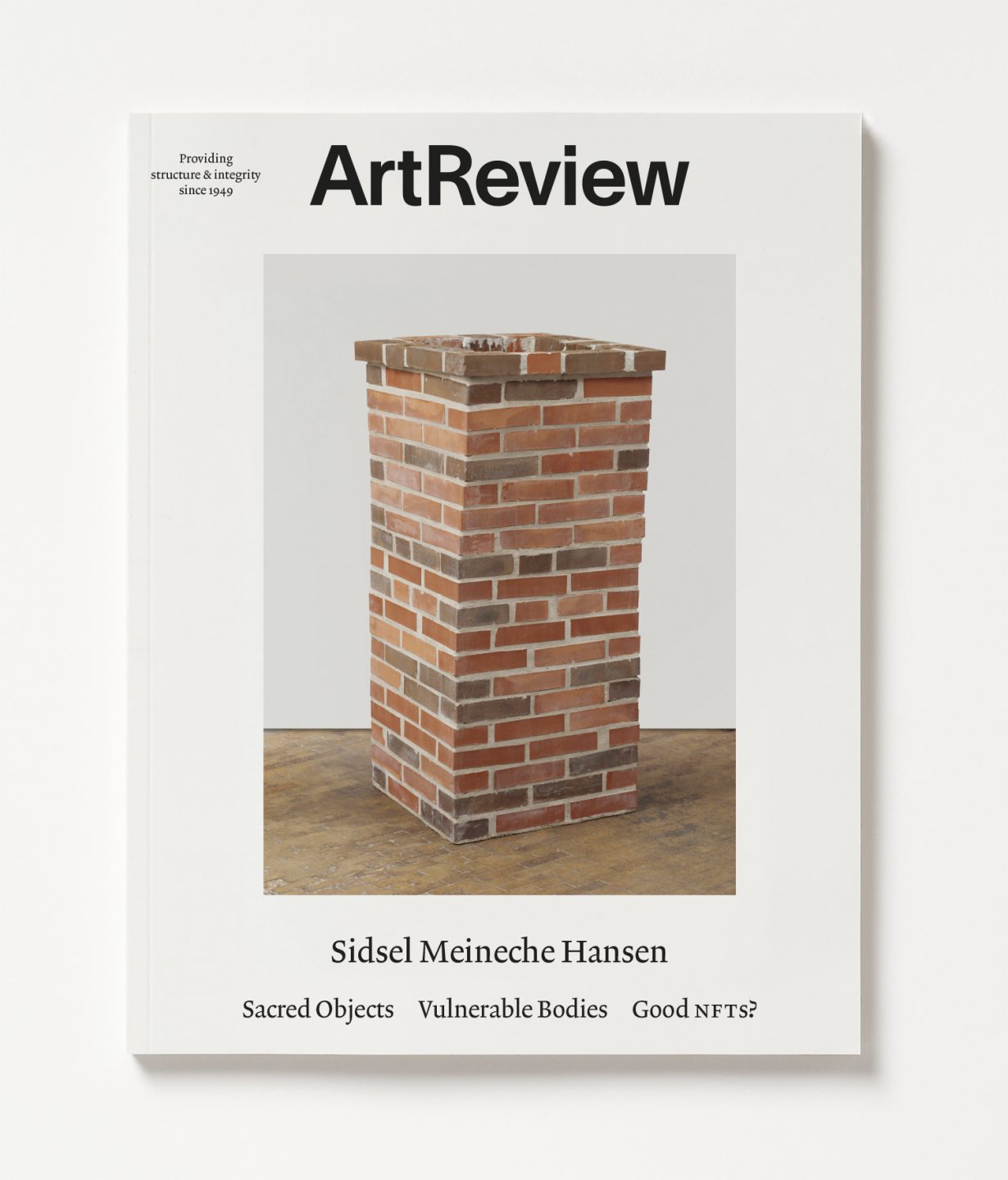Featuring Sidsel Meineche Hansen, Nairy Baghramian, Gala Porras-Kim, Jesse Darling, Tenant of Culture

The March issue of ArtReview – out now – focuses on the human body: artists examining its manipulation under capitalism, how it responds to the presence of art, and what happens when it enters museum collections.
Sidsel Meineche Hansen’s work across various media – including CGI animation, sculpture, woodcut, installation and publishing – explores our bodies as the frontline of resistance against a policed state. The body, Meineche Hansen posits, has been endlessly shaped by surveillance capitalism, the pharmaceutical industry and pornographic spectacle. In order to counteract such controls, Ben Eastham writes in a profile of her work: ‘Any coming insurrection against the existing order must, by extension, begin at the level of our nervous systems and bloodstreams’. Meineche Hansen asks what this might look like.
Nairy Baghramian ‘is a kind of surgeon’, writes Evan Moffitt. Her sculptures ‘resemble human viscera or appendages. Like our organs, their soft organic forms depend on hard skeletons for support’. These works invite us to become aware of our bodies’ relationship to sculpture, while also revealing corporeal selves – pieces that resemble ‘medical prostheses or dental tools – mechanisms that both constrain and augment the human body, sculpting it into a new bionic form’.
“When does a cadaver become old enough to become an object?” Oliver Basciano talks to artist Gala Porras-Kim, whose work investigates and analyses the lives of artefacts that find their way to and through museum collections, and the ways in which cultural heritage is preserved at these institutions, via a research-based practice that takes in various media, including drawing, painting, sculpture, collage and installation. Recently, this has taken the form of an inquiry into how human remains (as well as sacred cultural objects) are treated and presented by museums, and why such institutions could benefit from ‘spiritual caretakers’.
Also in this issue
Meanwhile, Louisa Elderton looks at the work of multimedia artist Jesse Darling, who engages with the ways in which modernity and capitalism has shaped identity politics, and questions who has the power to construct social and historical narratives. In their work, the human body often takes the form of anthropomorphised creatures that allude to mythology or ecclesiastical subjects; in doing so, ‘Darling tackles the questions of faith and fetish, relieving saints of their halos and bestowing them on the living, the strictures that bind bodies given a new logic or validity,’ writes Elderton.
Ross Simonini speaks with Hendrickje Schimmel, aka Tenant of Culture, whose work blends sculpture and couture, taking the form of barely-functional clothing and tapestries of ragged fabric. ‘I start from the concrete object. I open the seams, read the labels. It’s a very tactile and multisensory process. My work should speak for itself visually, without theory,’ she says.
And a year after Mike Winkelmann (aka Beeple) broke the art market with the $69 million sale of his digital art series The First 5,000 Days, precipitating the rise of NFT art, ArtReview turns to a selection of digital curators and critics to hear what they have to say about current trends in the NFT artworld.
Plus
Art historian Hortense Belhôte (creator of the popular Look but Don’t Touch art history video series) revisits Élisabeth Louise Vigée le Brun’s painting Juno Borrowing the Belt of Venus (1781) and casts a queer eye on the exchange; Martin Herbert considers the critic’s use of ‘I’; and Stephanie Bailey takes stock of recent exhibitions in Tallinn.
And the usual mix of book and exhibition reviews from around the world, including Haig Aivazian and Danielle Brathwaite-Shirley in London, Nikesha Breeze in Las Cruces, New Mexico, and Paul Fägerskiöld in Berlin.
***Click here to subscribe***